Physical Address
304 North Cardinal St.
Dorchester Center, MA 02124
Physical Address
304 North Cardinal St.
Dorchester Center, MA 02124

Explore 20 thoughtful romantic bedroom ideas rooted in Scandinavian design. Learn how to create a warm, minimalist sanctuary that fosters connection and calm with *hygge* principles.
In Scandinavian design, we believe a home is a conversation with yourself—every choice reflects not just a passing taste, but deeper values about how life should be lived. The most compelling spaces aren’t decorated; they are authored. They tell a quiet story of calm, connection, and contentment. This is especially true of the bedroom. The idea of a “romantic” space, from a Nordic perspective, has little to do with grand gestures or fleeting trends. It is about creating a sanctuary for quiet intimacy. These 20 principles are designed to guide you away from the superficial, toward a room that feels authentic, warm, and deeply resonant with the spirit of hygge.
Before we touch a single fabric or piece of furniture, we must begin with intention. True romance in a space is born from a philosophy of living—one that values presence, comfort, and the beauty found in simplicity. These principles are the bedrock of a room that feels like a refuge.
Perfect, rigid symmetry can feel formal and cold. Life is rarely perfectly balanced, and our spaces should reflect that human quality. Instead of identical bedside tables and matching lamps, seek a more organic harmony. Perhaps a low wooden stool sits on one side of the bed, a simple pedestal on the other. This gentle imbalance feels more authentic and relaxed. What I tell my clients seeking warm, minimalist spaces is that this isn’t about creating chaos; it is about achieving lagom—that perfect state of “just right.” A room with intimate asymmetry doesn’t demand perfection from you; it invites you to simply be.
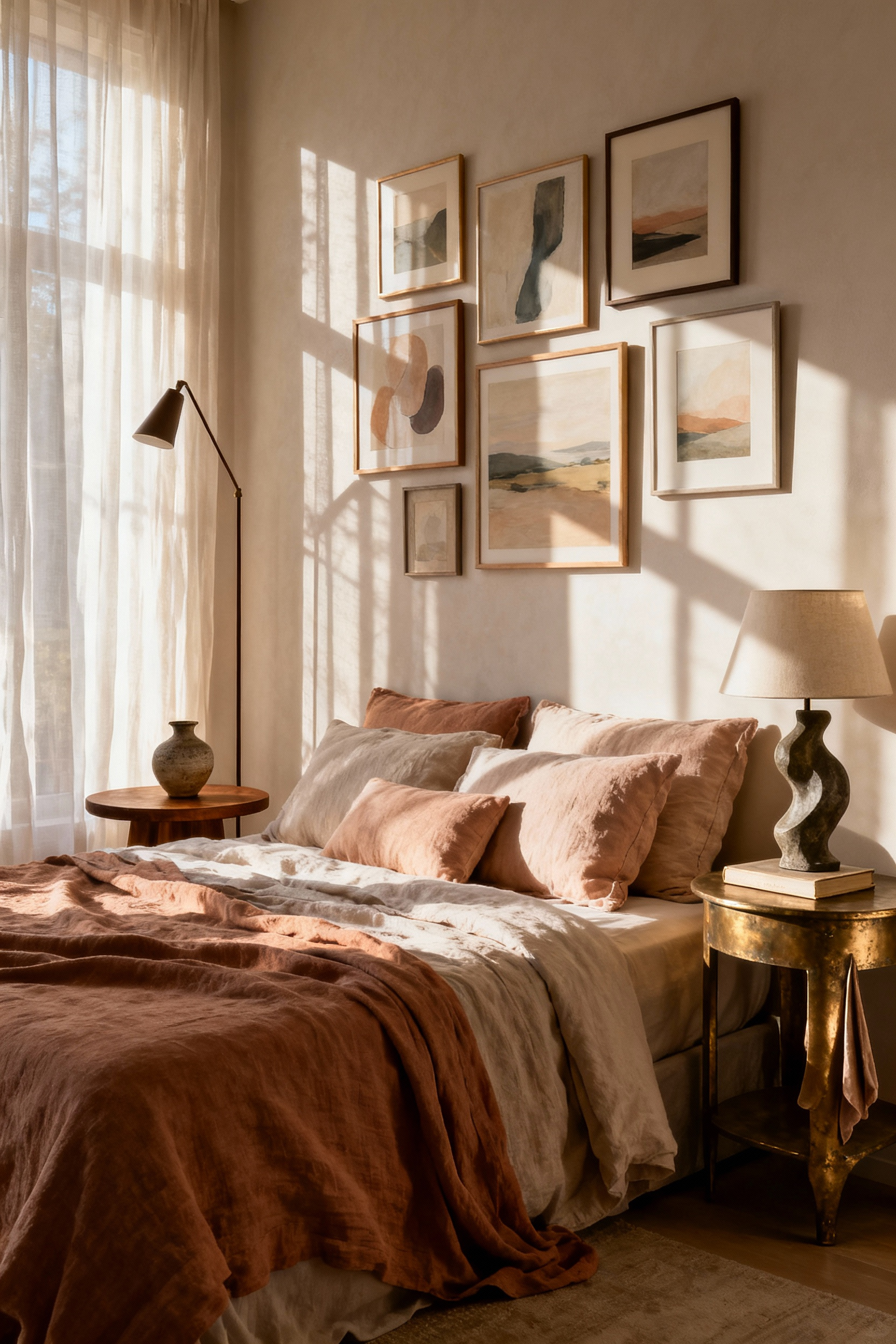
A room without personal history is a room without a soul. The deepest comfort comes from being surrounded by a story—your story. Intertwine your personal journey with biophilic elements that connect you to the natural world. This is where your space becomes a living journal.

Incorporate natural wood with a story—perhaps a piece of reclaimed timber as a shelf—alongside objects that hold meaning: a smooth stone from a shared holiday, a framed photograph in black and white, an inherited ceramic vase. What’s interesting is how these personal items, when paired with a simple fern or a branch in a vase, ground the room in something deeply real. The goal isn’t to create a museum, but a quiet backdrop of memory and nature that fosters emotional security.
The architecture of a room—its flow and its silence—has a profound impact on our state of mind. A romantic bedroom should be a sanctuary from the noise of the world, designed to minimize distraction and encourage focus on connection. The design itself becomes a gentle guide toward a state of calm.

This means considering acoustics. Heavy linen curtains, a soft wool rug, and an upholstered headboard all help to absorb sound, creating a quiet cocoon. Storage must be thoughtful and concealed. Clutter is the enemy of tranquility. Built-in wardrobes or a simple, elegant chest of drawers keep the visual landscape clean and uncluttered, allowing the mind to rest. Years of Nordic interior design have taught me that a room that is easy to keep tidy is a room that is easy to relax in.
For a bedroom to be a sacred space for connection, it must be protected from the constant intrusion of the digital world. The relentless glow of screens fragments our attention and pulls us away from the person right beside us. Reclaiming your bedroom as a no-screen zone is one of the most romantic acts you can perform.
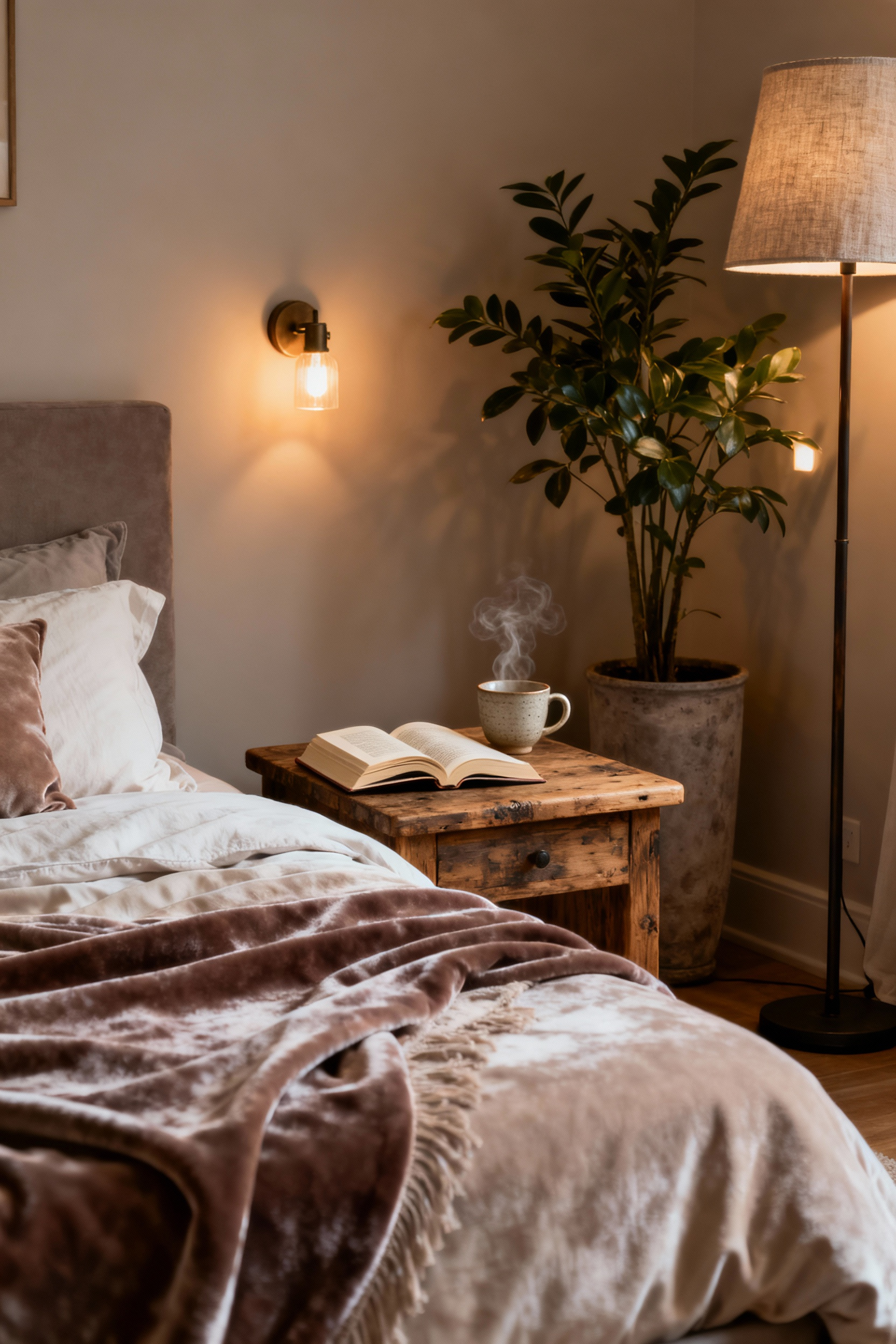
This is a very practical philosophy. I suggest a beautiful wooden box or a designated drawer outside the bedroom to house phones and tablets overnight. Replace digital alarm clocks with simple, silent analog ones. This intentional act creates a physical and psychological boundary. In the space created by this absence, you make room for other things: reading a physical book, quiet conversation, or simply being present with one another. It’s a powerful statement about what you value most.
The most enduring allure is not what shouts, but what whispers. The hygge philosophy champions a gentle engagement of all the senses. A romantic bedroom should feel as good as it looks, fostering a sense of well-being through understated sensory cues. This is where true comfort is found.
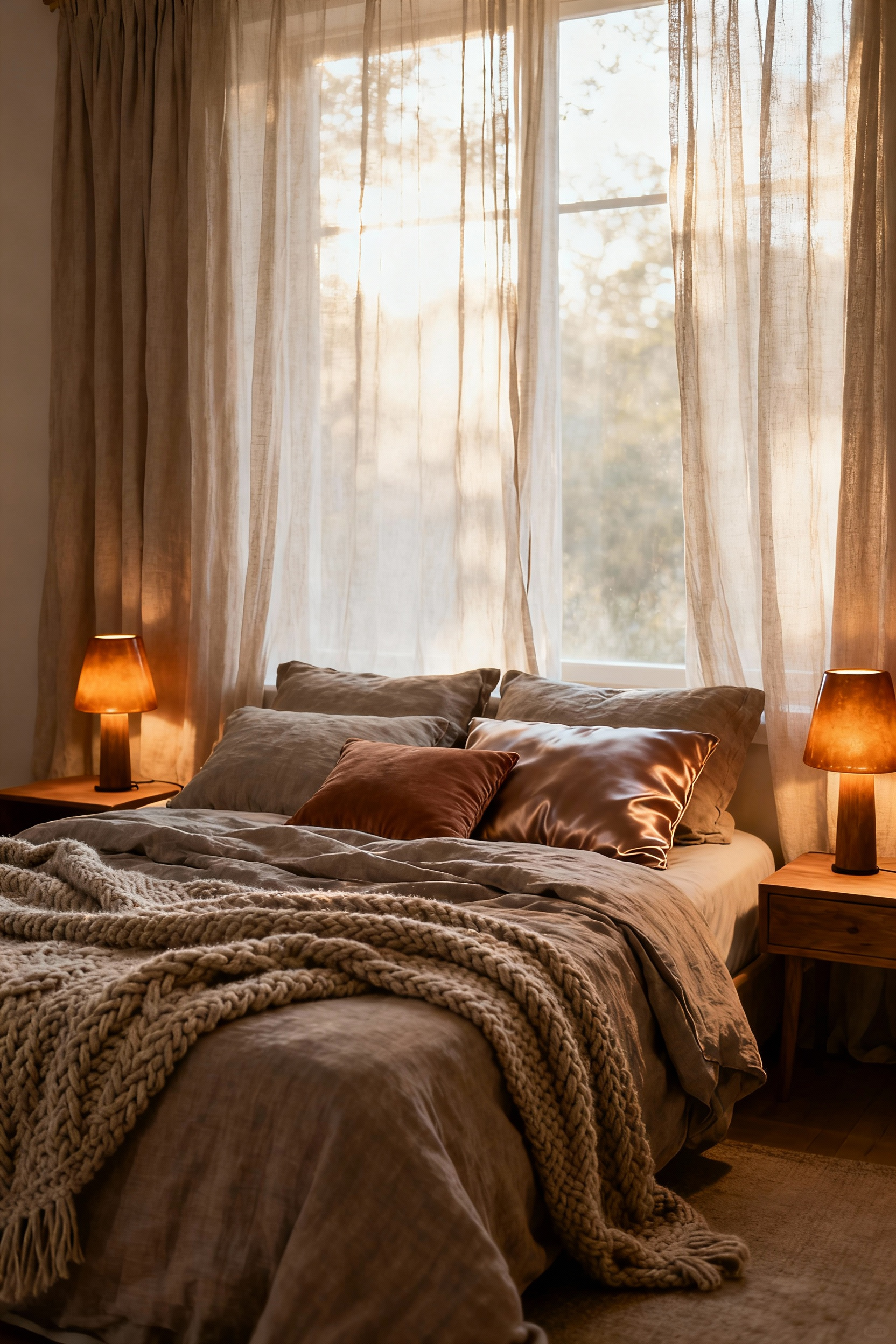
Think beyond the visual. The feel of soft, brushed cotton sheets or the weight of a cashmere throw. The subtle, clean scent of cedarwood or lavender from a natural diffuser, not a synthetic spray. The soft, flickering light from a few candles (or high-quality flameless versions for safety). This quiet orchestration of touch, scent, and sight creates an immersive atmosphere of calm, inviting you to slow down, breathe deeply, and reconnect.
The story of a Scandinavian space is told through its materials. Texture, color, and light are not mere details; they are the vocabulary we use to express warmth, comfort, and a deep connection to the natural world.
The bed is the heart of the room, and how you dress it speaks volumes. Layering high-quality, natural linens is a ritual that creates an irresistible invitation to rest and connect. It’s about a tactile experience that begins the moment you slip into bed.

Start with sheets of exceptional quality—stone-washed linen or long-staple cotton percale. Their natural texture feels incredible against the skin. Then, add a duvet filled with ethically sourced down or a wool alternative for breathable warmth and a comforting weight. Finally, complete the layering with a chunky knit wool or soft cashmere throw at the foot of the bed. I’ve seen this play out with clients time and again: investing in beautiful, functional bedding completely transforms their relationship with their bedroom. It becomes a place they truly long to be.
Light is the most powerful tool for shaping the mood of a space. Harsh overhead lighting is the antithesis of romance. The goal is to create a soft, layered glow that feels as warm and gentle as candlelight.
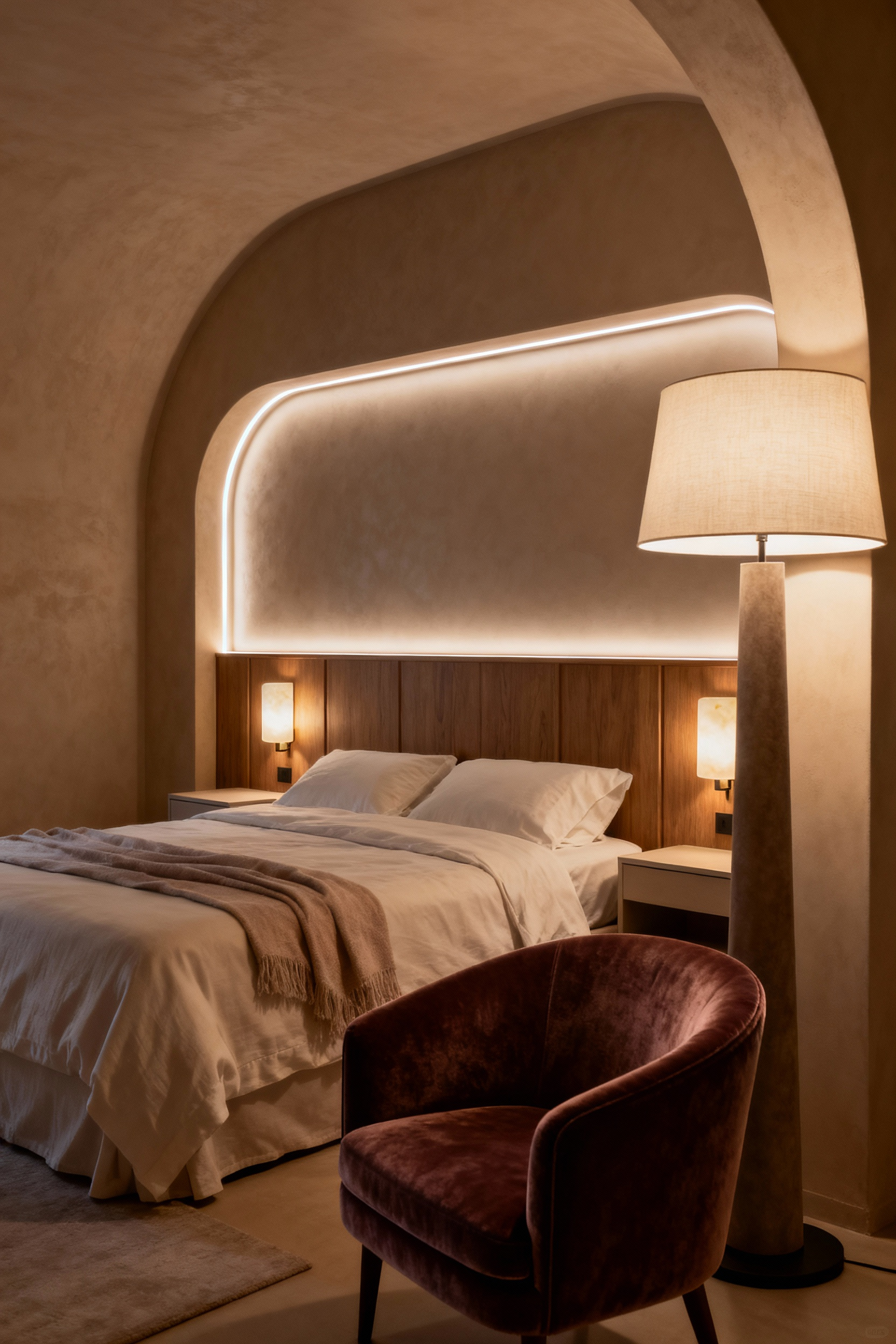
Every light source should be on a dimmer—this is non-negotiable for creating a flexible, intimate atmosphere. Use multiple sources of light: bedside lamps with fabric shades that diffuse a warm pool of light, perhaps a simple floor lamp in a corner to create depth, or even wall sconces that wash the walls in a soft glow. I recommend bulbs with a warm temperature of around 2700K. This golden light is inherently more flattering and calming, subtly signaling to your mind and body that it is time to unwind.
Color in a romantic bedroom should create a tranquil envelope, not a jarring statement. I always turn to the Nordic landscape for inspiration: the desaturated grays of coastal rock, the warm taupes of winter fields, the muted greens of the forest. These colors are calming because they are elemental.
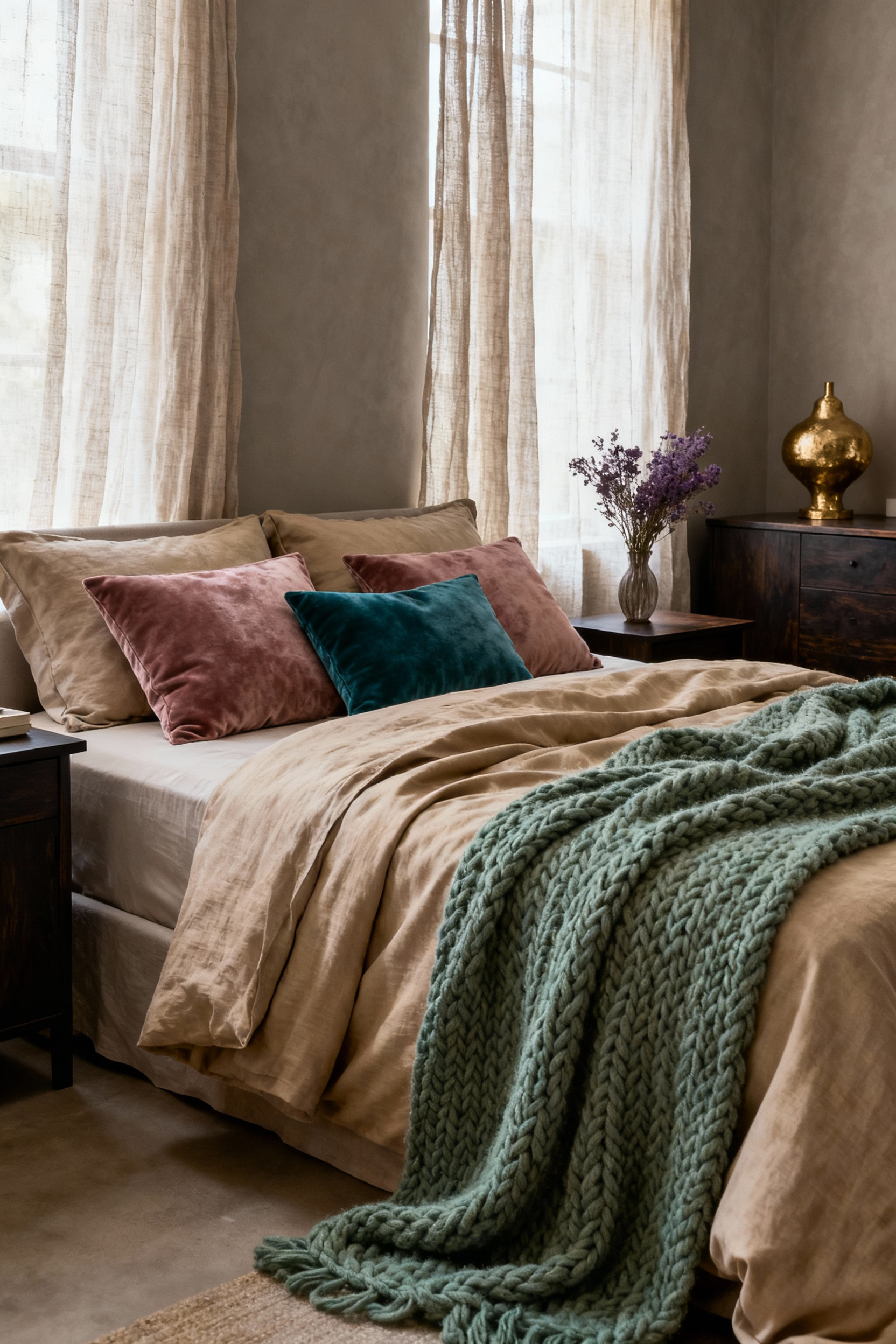
Paint your walls in a soft, matte finish that absorbs light, creating a velvety, immersive feeling. Let these earthy tones form the foundation, then introduce a subtle, muted accent. This might be the deep sapphire of a single velvet cushion or the soft, mossy green of a ceramic vase. These are whispers of color, not shouts. They add depth and sophistication without disturbing the profound sense of peace.
Scent is deeply tied to memory and emotion, yet it is often overlooked. To complete the sensory narrative of your bedroom, introduce a subtle, natural fragrance. The key is to avoid anything artificial or overpowering. The goal is an atmosphere that feels clean, calm, and alive.
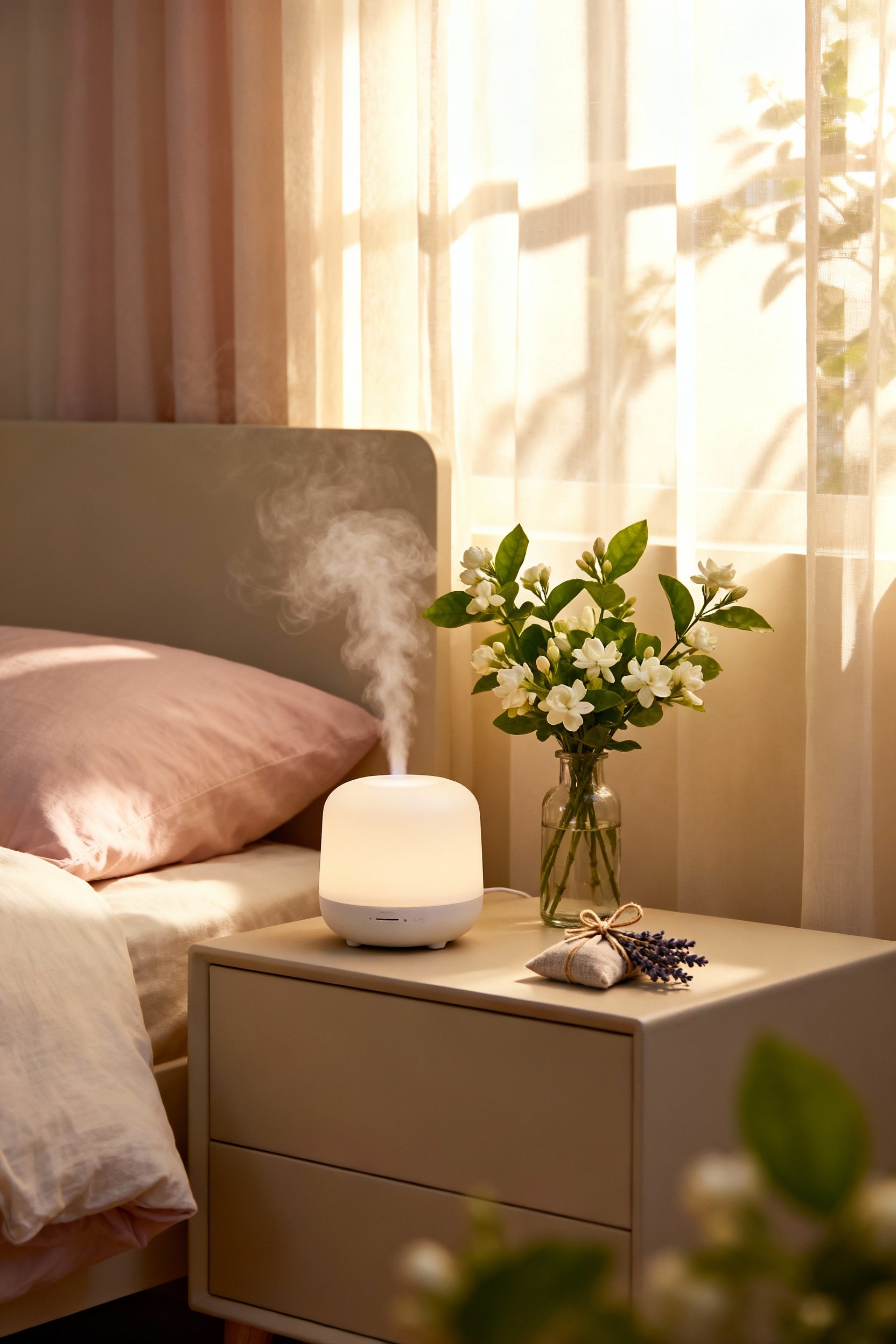
The simplest way to do this is with fresh botanicals. A few stems of eucalyptus in a vase or a small bundle of dried lavender on a bedside table can gently perfume the air. For something more consistent, a high-quality essential oil diffuser with pure oils like sandalwood, bergamot, or cedarwood works beautifully. This olfactory layer of serenity contributes to an overarching sense of peace, creating an invisible, yet deeply felt, layer of comfort.
A visually minimalist space can feel incredibly rich and warm through the artful use of texture. Create a tactile dialogue by pairing smooth, refined materials with those that are more raw and natural. This contrast engages the senses and adds layers of interest.
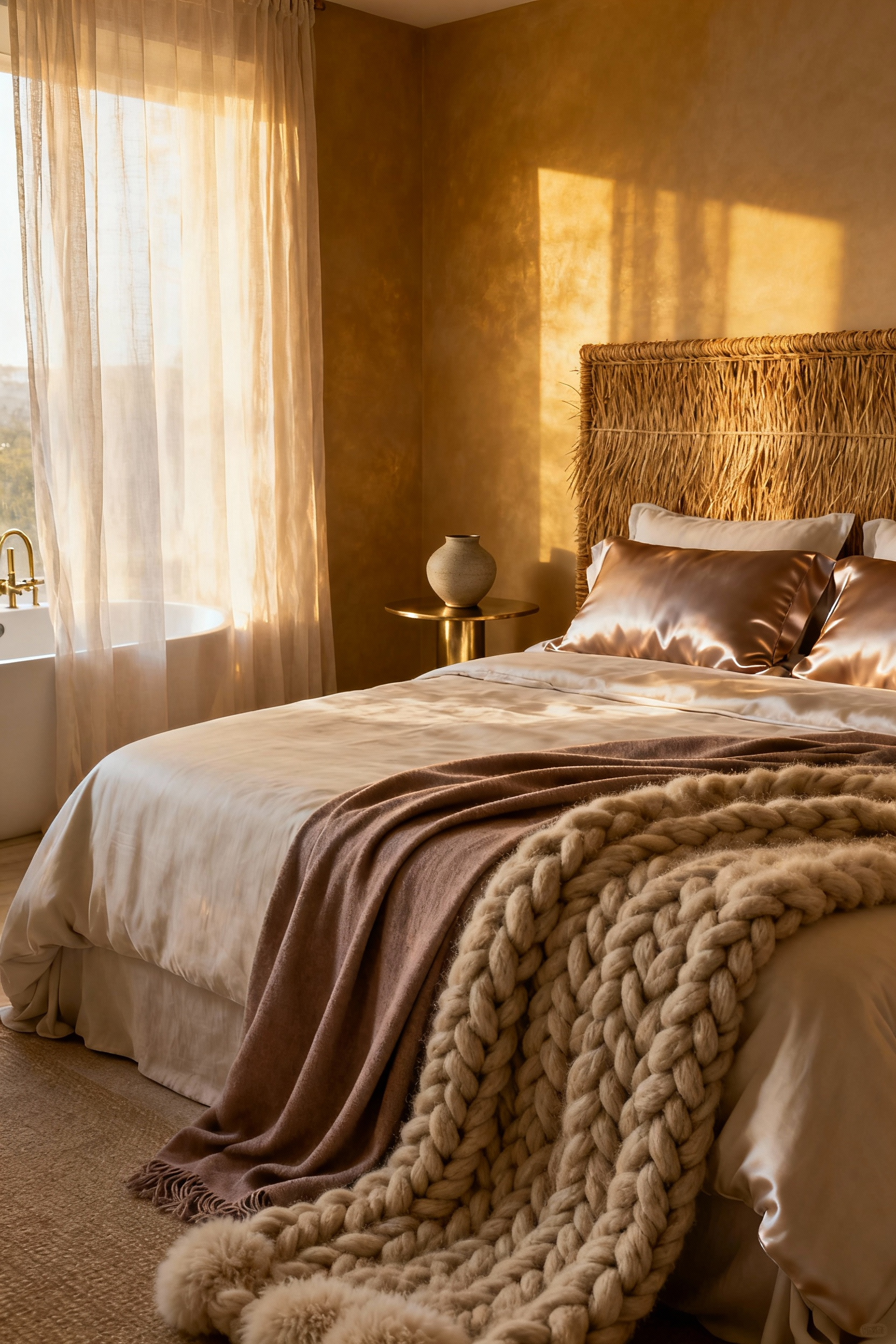
Imagine the cool, smooth surface of a silk pillowcase next to the honest, rustic feel of a linen duvet cover. Or a plush, soft wool rug underfoot on a polished concrete or warm wood floor. I learned this when working on a project with a very modern, clean-lined home; introducing raw, natural fibers like sheepskin and hand-knitted wool was the key to making the bedroom feel like a warm, human sanctuary rather than a sterile gallery. This interplay is what makes a space feel complete.
How we arrange our space can either encourage or inhibit connection. The thoughtful placement of furniture and creation of distinct zones within a room builds a silent architecture that supports intimacy, conversation, and personal peace.
The bed is not just a piece of furniture; it is the emotional and physical anchor of the room. Its placement dictates the entire flow and feeling of the space. It should feel like a safe, protected haven.
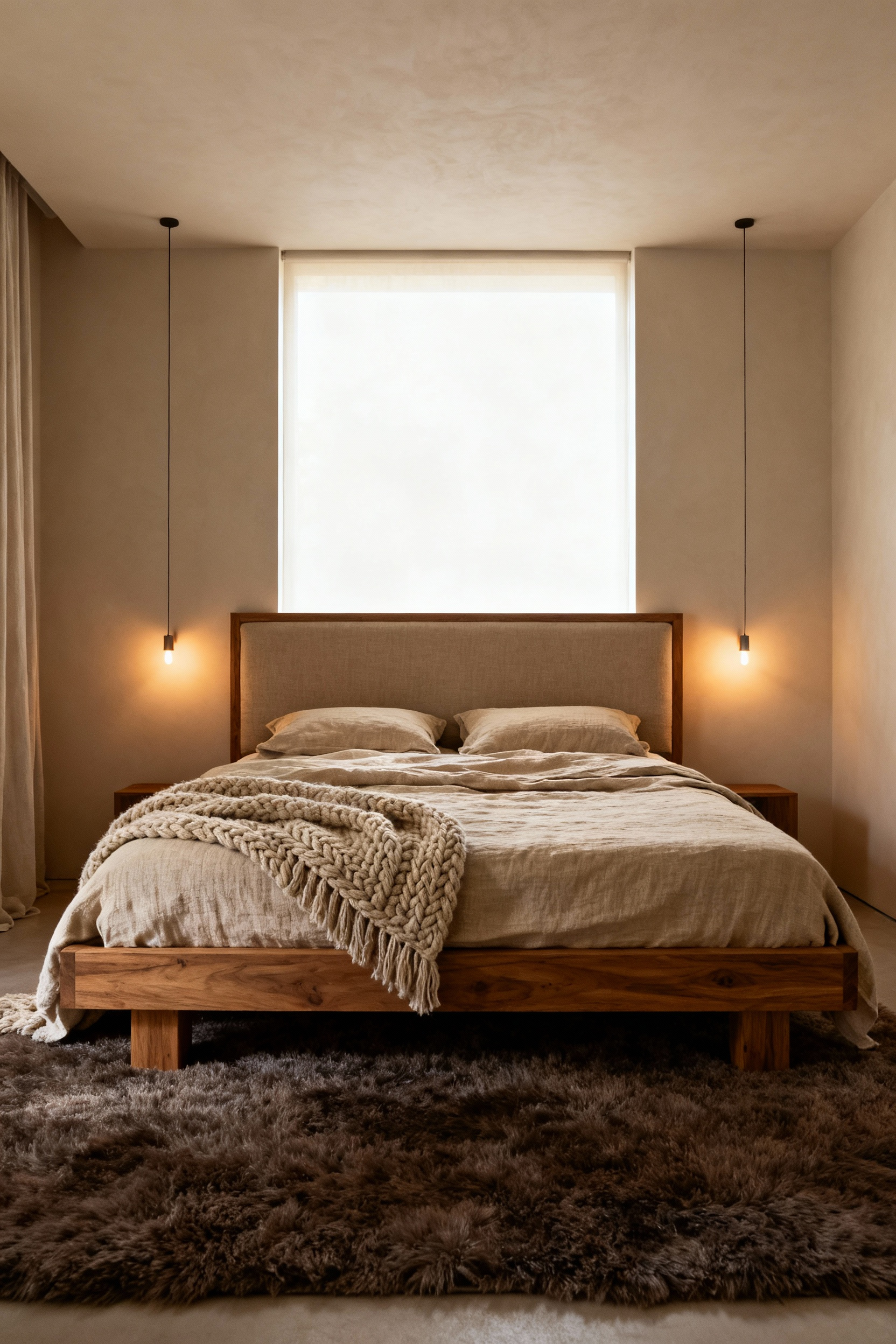
Position the bed against a solid wall, ideally where you have a clear view of the door but are not directly in line with it. This fosters a subconscious sense of security. The headboard itself plays a role; a simple, solid wood or beautifully upholstered headboard provides a grounding presence and a comfortable support for reading or talking in bed. The space around the bed should feel open and easy to navigate, creating an inviting, rather than constricted, flow.
A truly romantic bedroom offers more than just a place to sleep. It provides spaces for different kinds of connection. Creating a small, dedicated seating nook invites conversation, shared reading, or simply a moment of quiet togetherness.
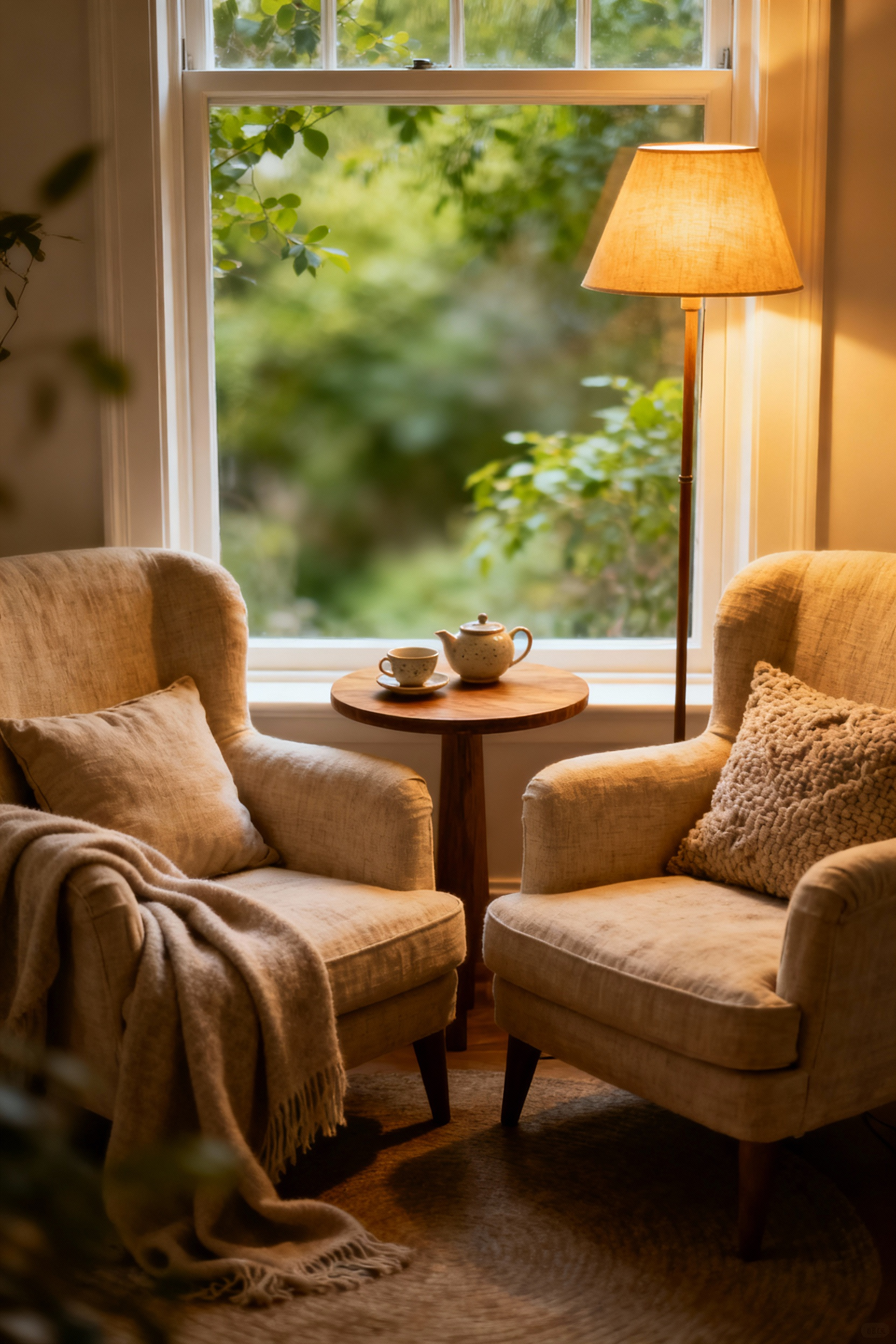
This doesn’t require a large room. A single comfortable armchair and a small side table in a corner, or a simple upholstered bench beneath a window, is enough. Light this space with its own dedicated lamp—a soft floor lamp, perhaps. This carves out an intimate zone separate from the bed, creating a micro-retreat for shared morning coffee or a late-night chat. From my work in Nordic interior design, I’ve noticed these little nooks often become the most beloved parts of a room.
The walls of your bedroom should not be an afterthought. They are a canvas for your shared story. Art should be chosen not to match the decor, but because it resonates with you on an emotional level. It’s a visual reflection of your journey.
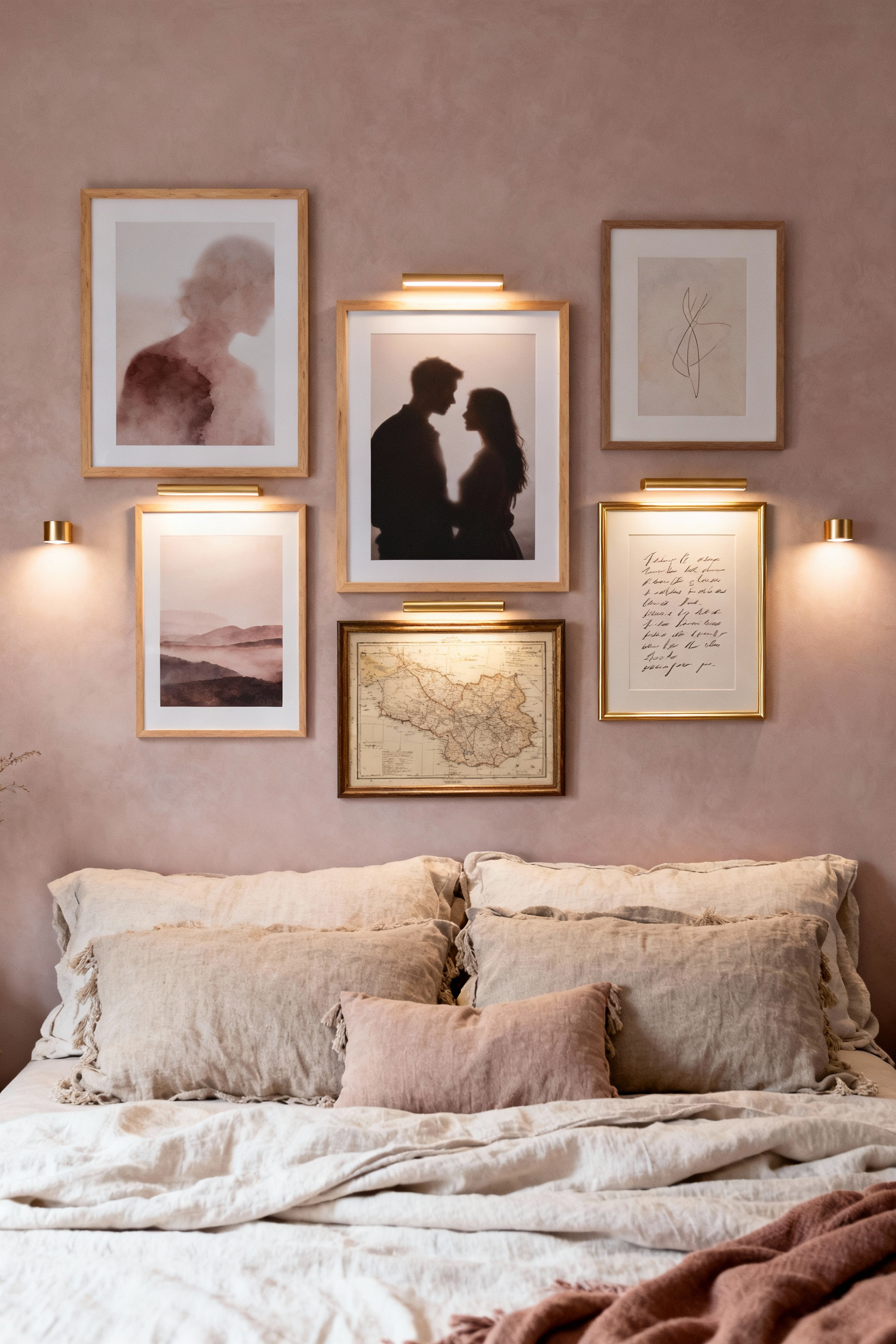
A single, large-scale abstract piece with calming colors can create a powerful yet serene focal point above the bed. Alternatively, a small, curated gallery wall of personal photographs, prints from a meaningful place, or simple line drawings can tell a more intimate story. Choose pieces that evoke peace, joy, or a cherished memory. This turns your walls into active participants in the room’s emotional landscape.
If you are lucky enough to have one, a fireplace represents the primal heart of a room. Its flickering light and elemental warmth offer a profound sense of comfort and connection that is almost ancestral. There is nothing more hygge.

Even without a traditional wood-burning fireplace, modern electric or ethanol versions can create the same hypnotic focal point. Arrange seating to face the hearth, making it the natural gathering spot on a cold evening. A simple mantel of reclaimed wood or smooth stone provides a surface for a few carefully chosen objects. The ritual of lighting a fire—even a symbolic one—can become a beautiful way to mark the transition from a busy day to a quiet evening of connection.
True partnership honors both togetherness and individuality. A well-designed bedroom subtly acknowledges this by creating soft zones for both shared experience and personal retreat. This is about fostering harmony, not building walls.

Use a beautifully textured area rug to define the main sleeping area. A chaise lounge angled in a corner by a window can create a distinct reading zone. A simple, elegant writing desk can provide a space for journaling or reflection. These zones are defined not by walls, but by thoughtful furniture placement, lighting, and textiles. This allows both partners to feel they have a personal sanctuary within the shared space, fostering respect and a deeper sense of ease.
A beautifully designed room is only the beginning. The true romance is sustained through the small, daily rituals that bring the space to life. This is how a design ethos becomes a way of life, constantly nurturing your connection.
The transition to sleep should be a gentle, intentional process. Creating a simple wind-down ritual signals to your body and mind that the day is over, and it’s time for rest and connection. This replaces the chaotic habit of scrolling on a phone until your eyes close.

An hour before bed, dim the lights and turn off all screens. Put on some quiet music. Perhaps you make a cup of herbal tea or read a few pages of a book. This could be a time for a quiet chat about the day or simply enjoying the shared silence. This consistent, calming ritual transforms your bedroom into a true sanctuary for restoration.
Just as the evening ritual is important, so is the way you greet the morning. Being jolted awake by a harsh alarm in a dark room is a stressful way to start the day. Instead, work with natural light to create a gentler awakening.
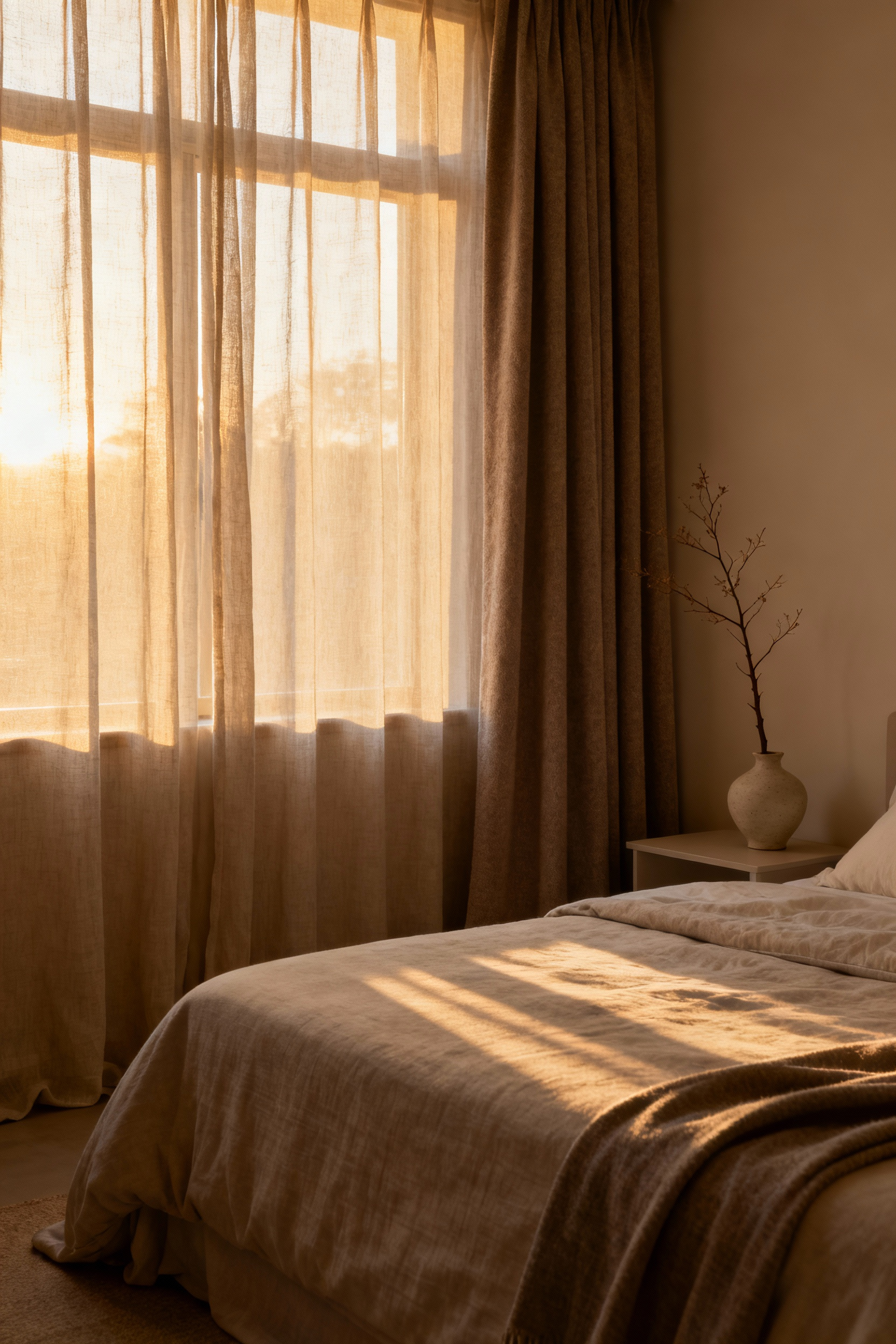
I always recommend layered window treatments. A sheer inner curtain can diffuse the early morning light, allowing you to wake up gradually with the sun’s natural rhythm. Behind it, a heavier blackout curtain offers the option for complete darkness when needed. Waking up slowly in a softly lit room allows for a few quiet moments of reflection or a gentle cuddle before the demands of the day begin.
Curate a small collection of items dedicated to comfort and sensory pleasure. Think of it as a personal apothecary, easily accessible for moments of self-care and shared pampering. This small gesture elevates everyday routines into moments of luxury.

On a simple tray on your bedside table, you might keep a high-quality hand cream with a subtle natural scent, a lavender linen spray, and a silk eye mask. Perhaps a beautiful bottle contains a nourishing massage oil. Having these items close at hand encourages their use, transforming a simple act like moisturizing your hands into a small, calming ritual.
A beautiful tray is a wonderfully versatile object. It’s practical, of course, but it’s also an invitation for serendipitous moments of indulgence. Its purpose is to make small, thoughtful gestures feel effortless and elegant.
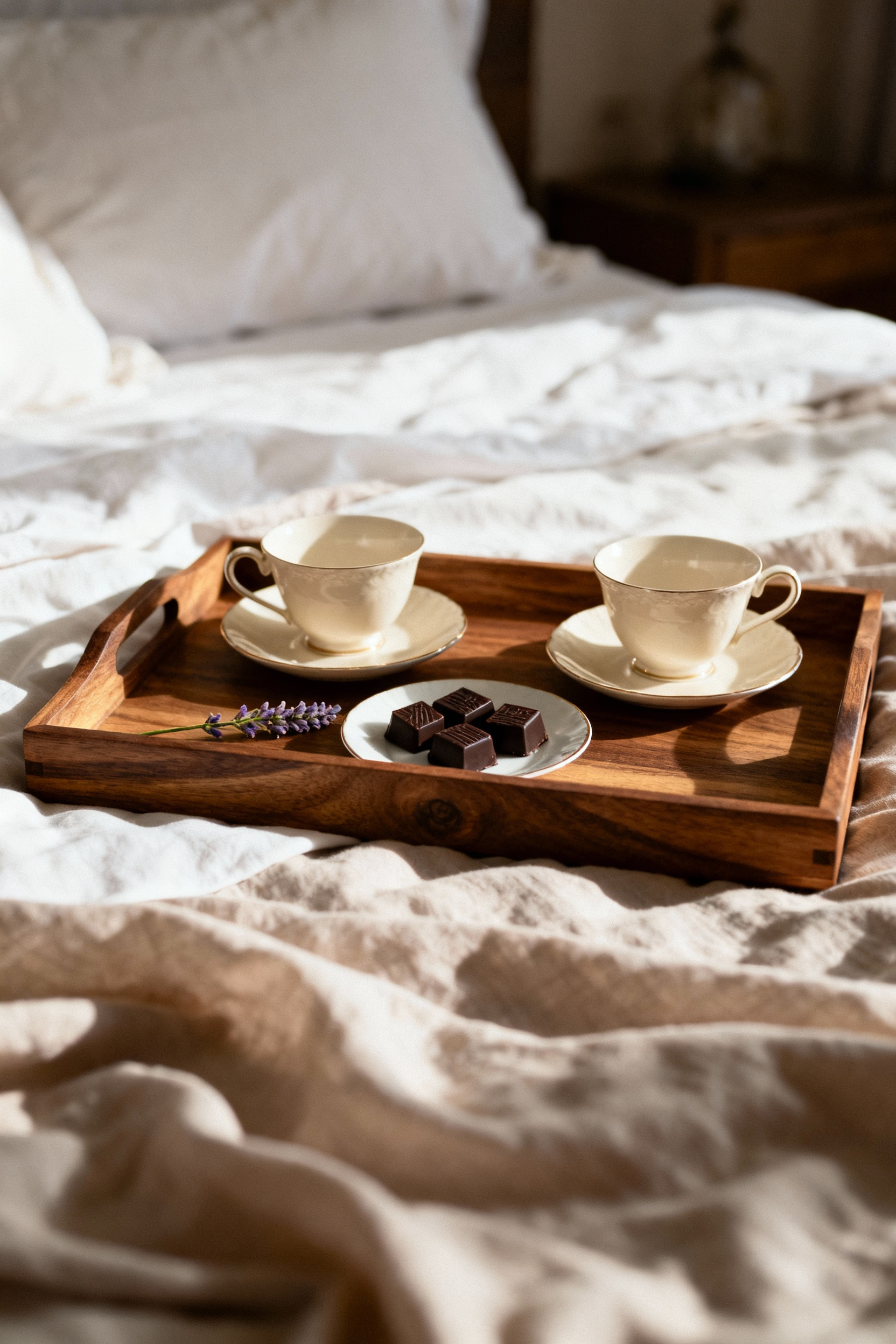
A simple wooden or slate tray can be used to bring in morning coffee, an evening glass of wine, or a small plate of fruit. The act of presenting something on a tray elevates it from a mundane act to a special offering. When not in use, the tray itself can be a beautiful object, leaning against the wall on a dresser or holding a few candles. It’s a quiet promise of future moments of shared pleasure.
Finally, the most enduring ritual is one of gentle, consistent care for your space. A state of calm cannot exist amidst clutter. This isn’t about constant, stressful cleaning, but a mindful practice of keeping your sanctuary clear and serene.
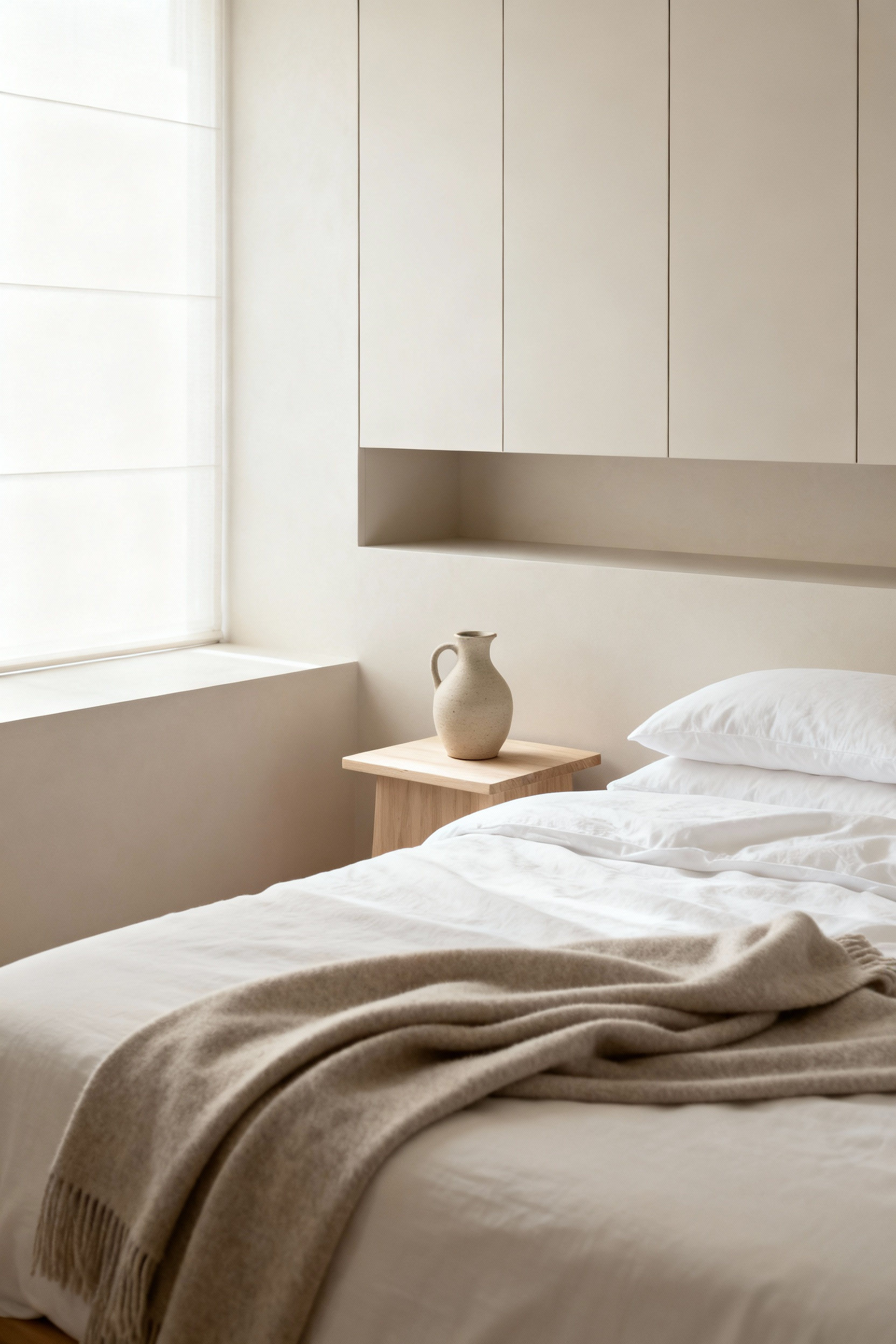
Spend five minutes before leaving the room in the morning, and five minutes before bed in the evening, simply putting things back in their place. Make the bed, fold the throw, clear the surfaces of anything that doesn’t belong. This simple act of ‘resetting’ the room is a form of meditation. In my experience with Scandinavian design principles, maintaining this external order fosters a profound sense of internal calm, allowing your romantic sanctuary to remain just that—a sanctuary.
Creating a romantic bedroom through the lens of Scandinavian design is ultimately an act of mindfulness. It is a turning away from clutter, noise, and distraction, and a turning toward warmth, authenticity, and quiet connection. As you can see from these 20 principles, this is not about following a strict set of rules, but about adopting a philosophy—one that prioritizes well-being, cherishes simplicity, and understands that the most beautiful environments are those that allow us to be our most peaceful and present selves.
Let this be your guide not to create a perfect room, but a space that feels deeply and personally yours. A space that supports your relationship, provides profound rest, and serves as a daily reminder of the beauty found in a simple, well-lived life. In this, you will find the most enduring and meaningful romance of all.